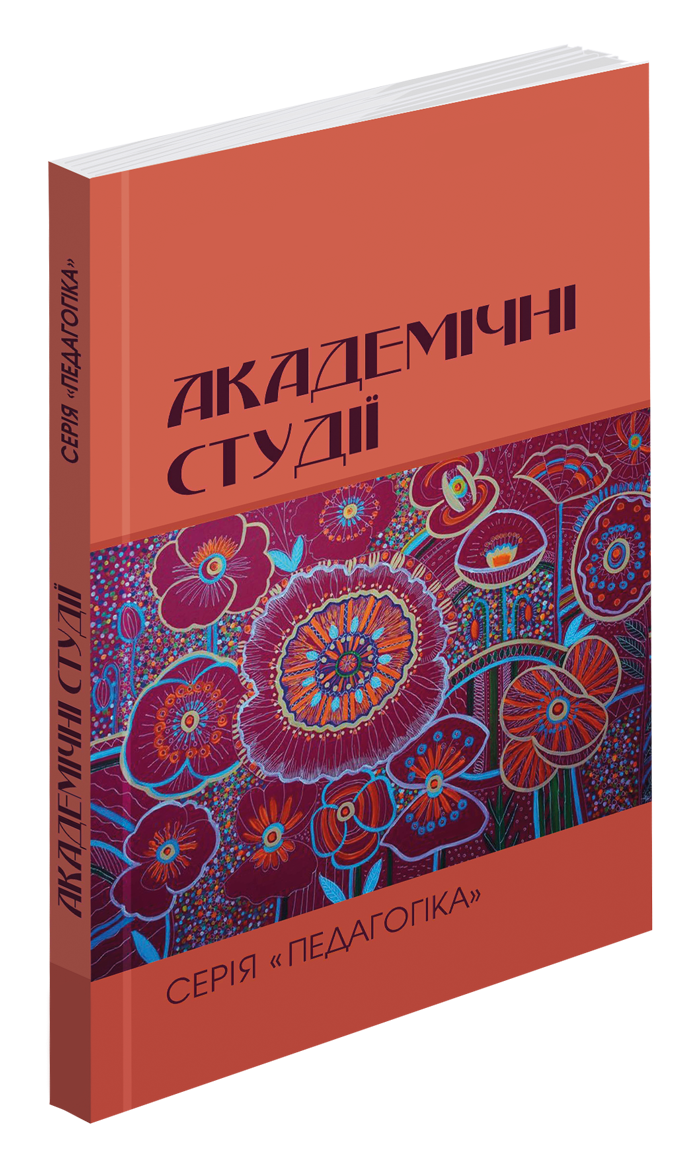Abstract
The article is devoted to the study of the implementation of STEM technologies in the transdisciplinary information and didactic environment (TIDE) as a key area of modernization of modern education. The methodology of teaching physical, mathematical and engineering disciplines based on STEM principles is revealed. It is aimed at integrating interdisciplinary knowledge, developing critical thinking, creativity and engineering skills in students, meeting the requirements of modern science, technology and innovative production. The paper highlights the categories of modern digital services relevant to the implementation of STEM technologies in TIDE. In particular, the emphasis is placed on tools for modeling physical phenomena, simulating engineering processes, data visualization platforms, as well as distance learning systems and learning platforms that provide interactive interaction. The role of these services in ensuring individualization of learning and adaptability to the educational needs of STEM learners is substantiated. Particular attention is paid to the main components of ontological systems implemented in TIDE based on STEM. Their functional structure is defined, which includes tools for semantic data analysis, automation of the educational process and integration with other information systems. The technological conditions necessary for the effective functioning of such an environment, in particular adaptability, interactivity, scalability and interoperability, are investigated. A classification of STEM technologies by educational contexts is proposed, taking into account their role in the formation of interdisciplinary competencies. In addition, the structure of cognitive services based on transdisciplinary ontologies is developed. These services provide personalization of learning, support reflective analysis of students' knowledge and contribute to the development of key competencies of the XXI century, such as the ability to innovate, communication and cooperation. The results of the study show that the introduction of STEM technologies in TIDE contributes to improving the quality of education, integrating innovative approaches into the educational process, and training highly qualified specialists in the fields of physics, mathematics, engineering, and technology. The results obtained can be used to develop new educational programs and methods aimed at integrating STEM into education.
References
Вітвицька С. С. Основи педагогіки вищої школи: підр. за модульно-рейтинговою системою навчання для студентів магістратури. Київ : Центр навч. л-ри, 2006. 384 с.
Сурмин Ю. П., Туленков Н. В. Теория социальных технологий : Учеб. Пособие. Киев : МАУП, 2004. 608 с.
Туркот Т. І. Педагогіка вищої школи: навч. посіб. для студ. ВНЗ. Київ: Кондор, 2011. 628 c.
Кузьменко О. С. STEM-моделювання фізичних явищ у процесі навчання студентів професійно-технічним дисциплінам в закладах вищої освіти. Наукові записки / Ред. кол.: В. Ф. Черкасов, В. В. Радул, Н. С. Савченко та ін. Серія : Педагогічні науки. Кропивницький, 2018. Вип. 168. С. 120–124.
Kuzmenko, O., Dembitska, S., Miastkovska, M., Savchenko, I., Demianenko, V. Onto-oriented Information Systems for Teaching Physics and Technical Disciplines by STEM-environment. International Journal of Engineering Pedagogy, 2023, 13(2), pp. 139–146. https://doi.org/10.3991/ijep.v13i2.36245
Головін О.О., Стрижак О.Є., Величко В.Ю. Мережецентрична взаємодія експертів у форматі наративного дискурсу. Medical Informatics and Engineering. 2020. № 4 (52). C. 19–25.
Dovgyi, S., Stryzhak, O. (2021). Transdisciplinary Fundamentals of Information-Analytical Activity. In: Ilchenko, M., Uryvsky, L., Globa, L. (eds) Advances in Information and Communication Technology and Systems. MCT 2019. Lecture Notes in Networks and Systems, vol 152. Springer, Cham. https://doi.org/10.1007/978-3-030-58359-0_7
О. Є. Стрижак, В. В. Горборуков, О. В. Франчук, М. А. Попова. Онтологія задачі вибору та її застосування при аналізі лімнологічних систем. Екологічна безпека та природокористування : 3бірник наукових праць. Київський національний університет будівництва і архітектури, НАН України Інститут телекомунікацій і глобального інформаційного простору. Київ, 2014. Вип. 15. С. 172-183.
Широков В. А. Язык. Информация. Система: Трансдисциплинарность в лингвистике. Київ: 2017. 280 с.
Широков В. А., Булгаков О. В., Грязнухіна Т. О., Костишин О. М., Кригін М. Ю. Корпусна лінгвістика: монографія. Київ: Довіра, 2005. 472 с.
Надутенко М. В. Віртуалізовані лексикографічні системи та їх застосування у прикладній лінгвістиці: автореф. дис ... канд. техн. наук: 10.02.21 / Національна бібліотека України ім. В. І. Вернадського. Київ, 2016. 22 с.
Elson D. K. Modeling Narrative Discourse: Ph.D. thesis. Columbia University. New York City, 2012. 383 p.
Приходнюк В. В. Технологічні засоби трансдисциплінарного представлення геопросторової інформації: автореф. дис. ... к-та техн. наук: 05.13.06 / ІТГІП НАНУ. Київ, 2017. 20 с.
Горборуков В.В.Технологічні засоби онтологічного супроводу розв'язання задач ранжування альтернатив: автореф. дис. … канд. техн. наук: 05.13.06 / Вячеслав Вікторович Горборуков, НАН України. Ін-т телекомунікацій і глоб. інформаційного простору. Київ : [Б.в.], 2018. 20 с.
В. П. Горбулін, С. К. Полумієнко, О. Є. Стрижак. Індикативне оцінювання науково-технологічного розвитку України: методологічний аспект. Стратегічна панорама. 2018. № 1. С. 5-19.
Попова М. А. Модель онтологического интерфейса агрегации информационных ресурсов и средств ГИС. International Journal “Information Technologies and Knowledge”. 2013. Vol. 7, Issue. 4. Pp. 362-370.
Стрижак О. Є., Потапов Г.М., Приходнюк В.В., Чепков Р.І. Еволюція управління – від ситуаційного до трансдисциплінарного. Екологічна безпека та природокористування: 3бірник наукових праць. Київський національний університет будівництва і архітектури, НАН України Інститут телекомунікацій і глобального інформаційного простору. Київ, 2019. Вип. 2 (30). С. 91-112.

